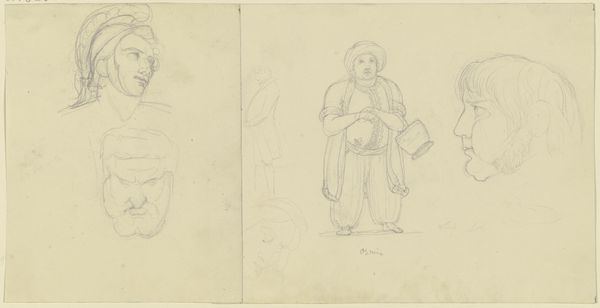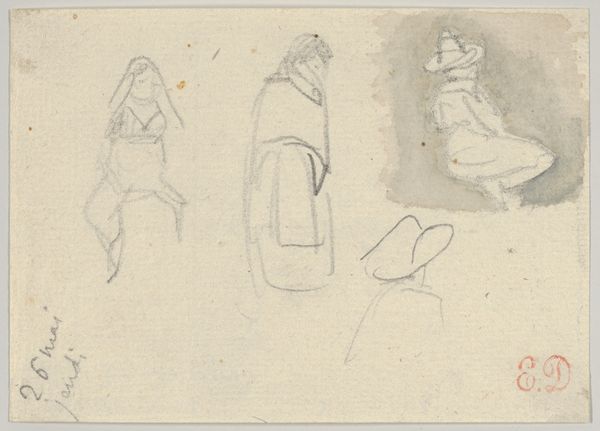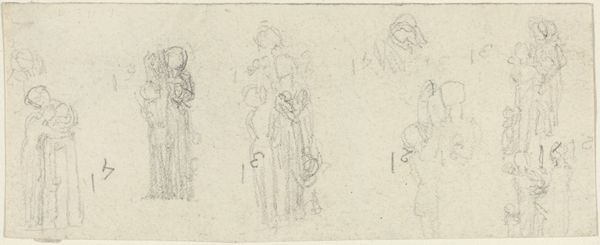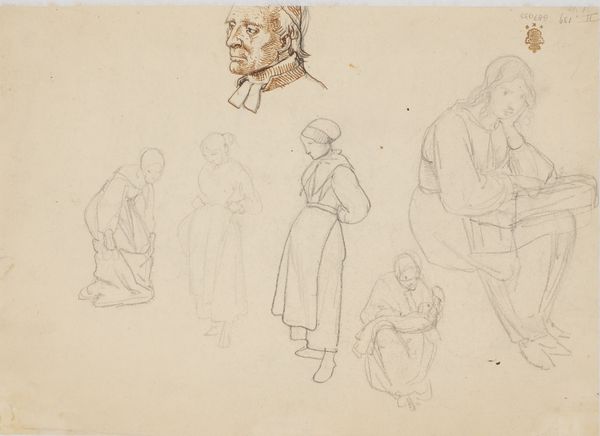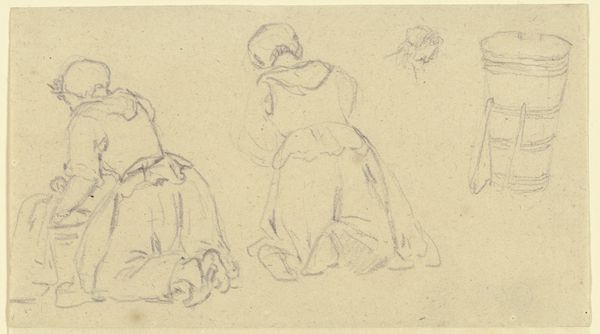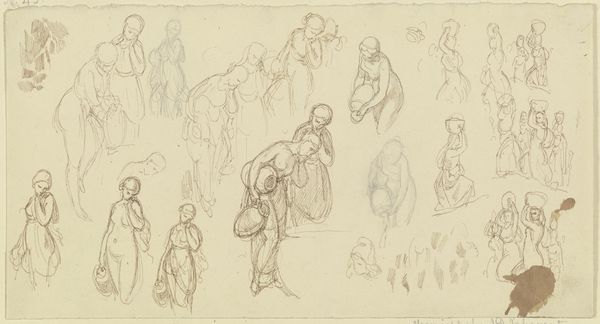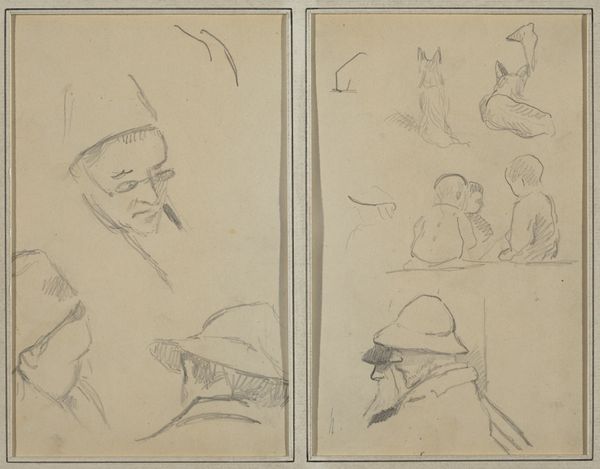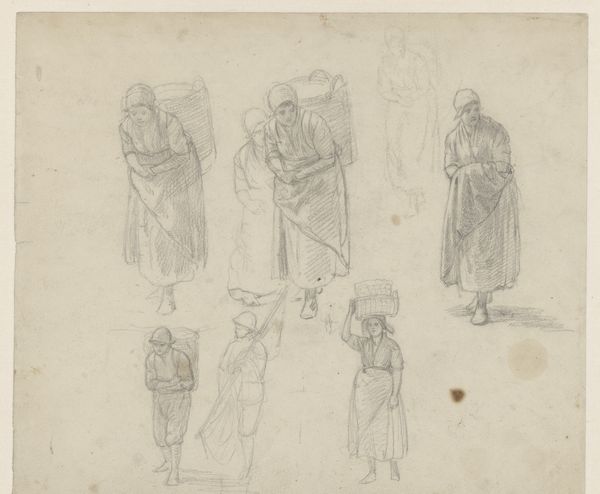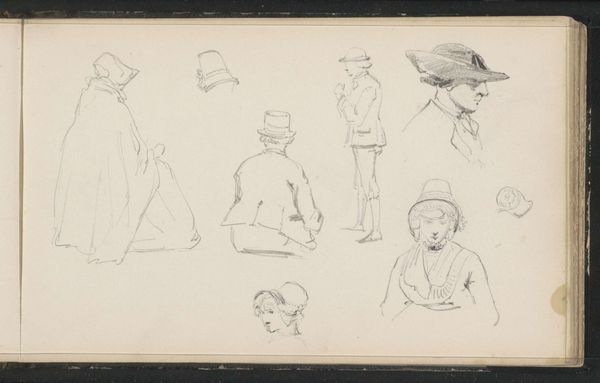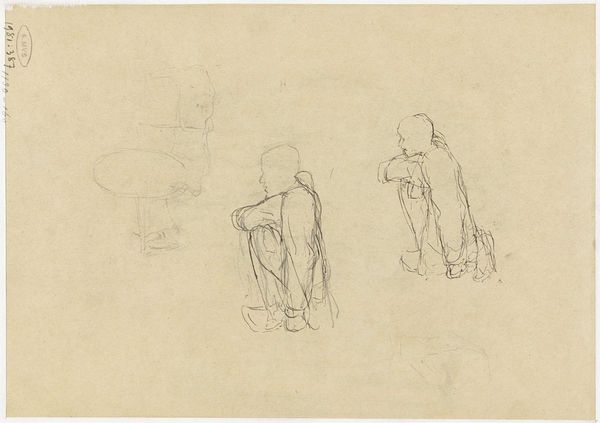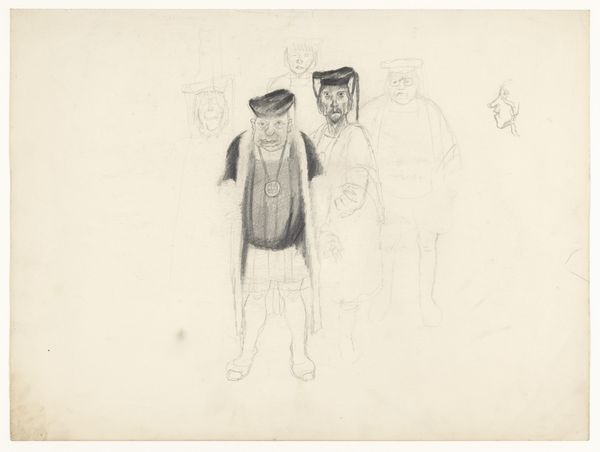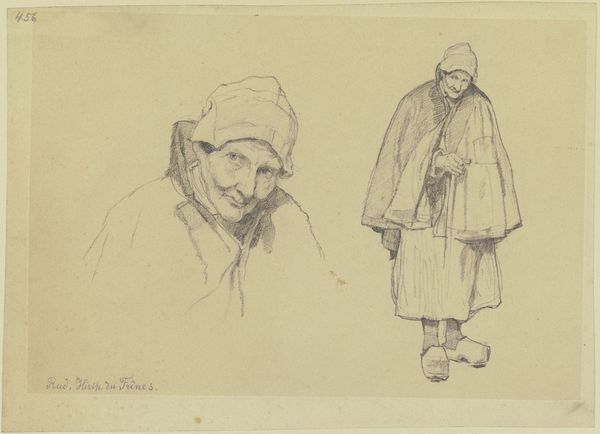
drawing, pencil
#
portrait
#
drawing
#
pencil
#
orientalism
#
realism
Dimensions: height 347 mm, width 509 mm
Copyright: Rijks Museum: Open Domain
Curator: Here we have "Studies van Algerijnen," or "Studies of Algerians," by Ferdinand Hart Nibbrig, made between 1876 and 1915. It's a pencil drawing, so we are seeing the initial stages of artmaking, sketches on paper capturing fleeting impressions. Editor: Fleeting is right! I get this feeling of observation at a distance, like a quick sketch in a traveller’s notebook. What I find really striking is how unfinished it all feels, yet each face, each pose is so present. It’s tender. Curator: It embodies the Orientalist style, very popular at the time, which captured a Western fascination with the Middle East and North Africa. Each carefully rendered headdress tells a story, each veiled figure speaks to cultural mystery. Note the use of realism in rendering their individual features against a sort of anonymous backdrop. Editor: It is true; these images always give me mixed feelings. The term "Orientalism" has so much baggage around power and representation, doesn’t it? Still, I can't help but feel this immediate human connection, these subjects appear thoughtful. What do you think that ambiguity might speak to? Curator: I see the psychological undercurrent, a desire for understanding clashing with the constraints of his time. This interplay shows the complex nature of cultural exchange: while art can be informative and celebrate culture, it may also perpetuate historical bias, especially by imposing a specific gaze on people different from that of the artist's own culture. It seems like Nibbrig grappled with how to respect individuality. Editor: So we're seeing more than just Algerians in a drawing—we’re seeing the artist wrestle with his own perspective, which, when you put it like that, it is a reflection of who he is. I am reminded that artistic representation tells a bigger story than its subject, especially of those telling the stories. Curator: Yes, absolutely! We learn not only about the Algerian people depicted but also the Western gaze observing them. Art invites questions and discussions. Editor: Agreed! What initially appears as simple observation becomes layered with historical weight, emotional nuance and even some creative uncertainty.
Comments
No comments
Be the first to comment and join the conversation on the ultimate creative platform.
